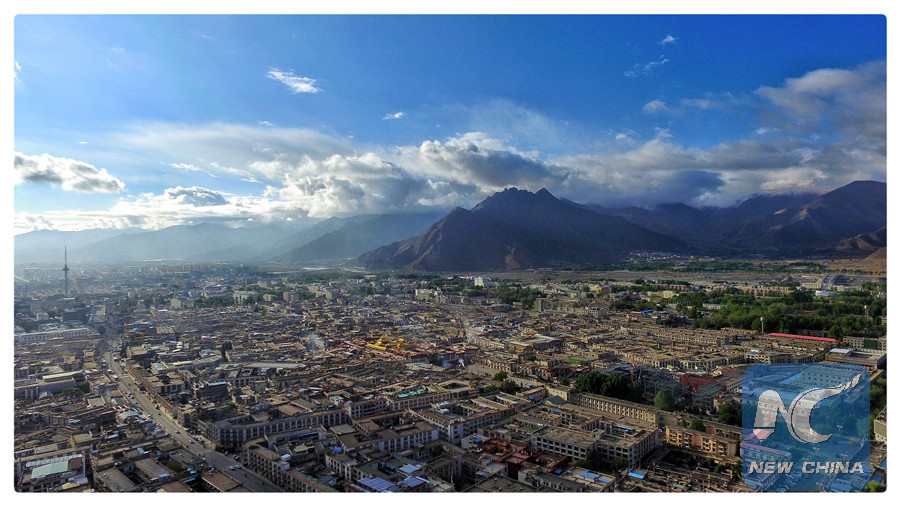
Photo taken on May 23, 2016 shows a bird view of Lhasa. (Xinhua/Purbu Tashi)
Like many places in China, Lhasa, capital of the Tibet Autonomous Region, has expanded rapidly in past decades.

Photo taken on May 23, 2016 shows a street of Lhasa at night. (Xinhua/Purbu Tashi)
The rapid development is partly owed to the epoch-making railroad.

Photo taken on May 23, 2016 shows a bird view of Lhasa. (Xinhua/Purbu Tashi)
The Qinghai-Tibet Railroad, the world's highest and longest plateau railway, was the first to connect Tibet with the rest of China. Over 10 years, the railway has served as a route to development and prosperity. The railway project has also set a good example in environment and wildlife protection.
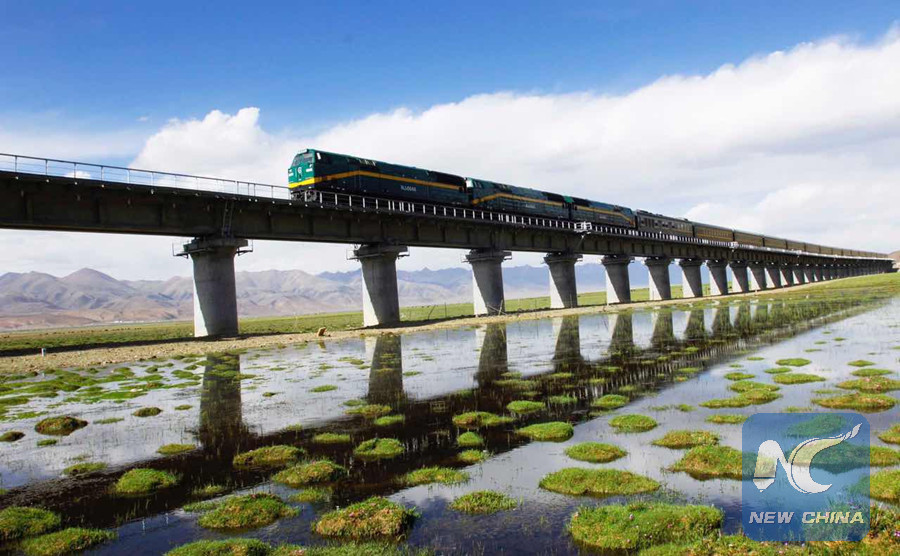
A train runs on a bridge in north Tibet on June 26, 2007. (Xinhua/Purbu Tashi)
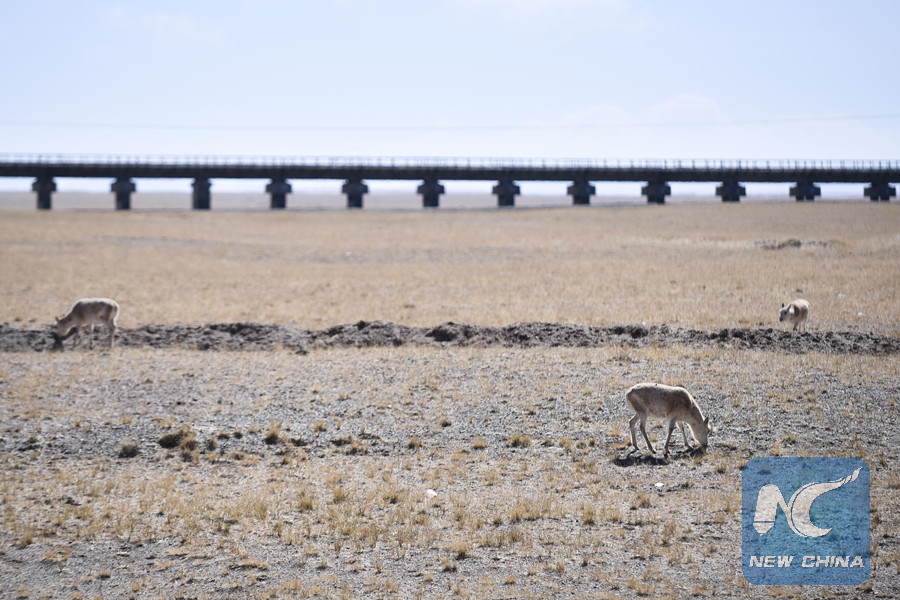
Tibetan antelopes wander along a section of the Qinghai-Tibet railroad in Hol Xil on March 11, 2016. (Xinhua/Wu Gang)
Tibet recorded 10.6 percent GDP growth during the first half of 2016 thanks to investment in infrastructure and local industries, atop 25 Chinese provinces and municipalities as of July.
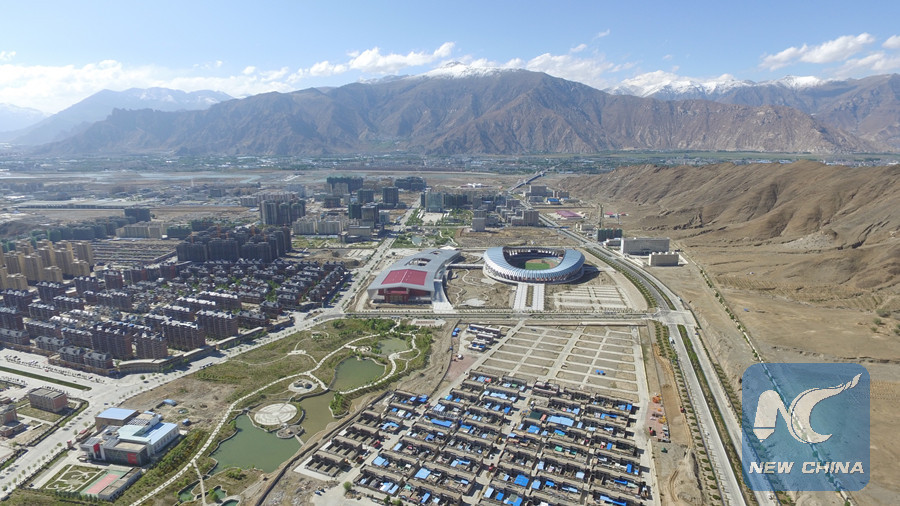
Photo taken on May 17, 2016 shows Liuwu new district of Lhasa. (Xinhua/Purbu Tashi)
In 2015, the per capita disposable income of urban residents in the region was 25,457 yuan (3,807 U.S. dollars), compared with 565 yuan in 1978, and that of farmers and herdsmen last year was 8,244 yuan, representing an average annual increase of 12 percent, according to government statistics.
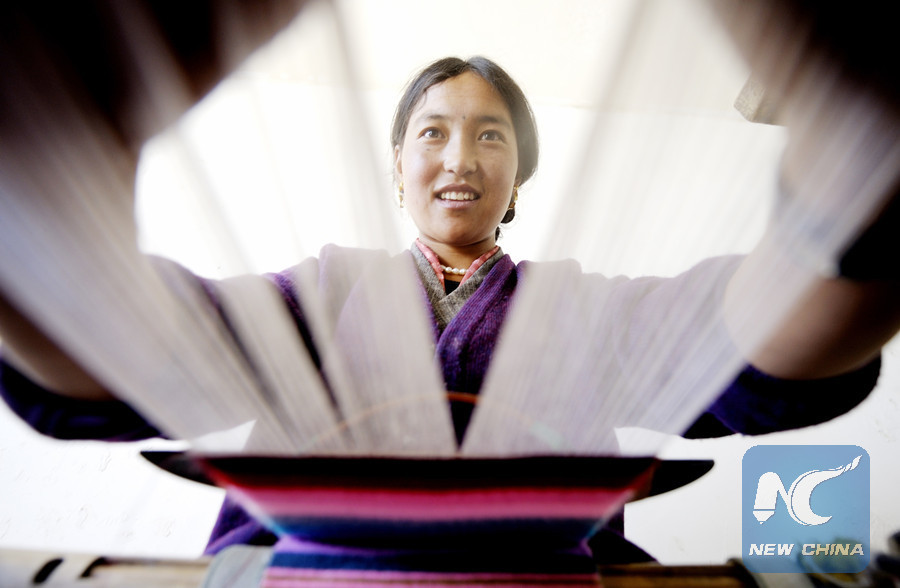
A Tibetan woman weaves traditional Tibetan cloth on March 17, 2010. (Xinhua/Purbu Tashi)
Tibet's robust growth is underpinned by strong investment in infrastructure.
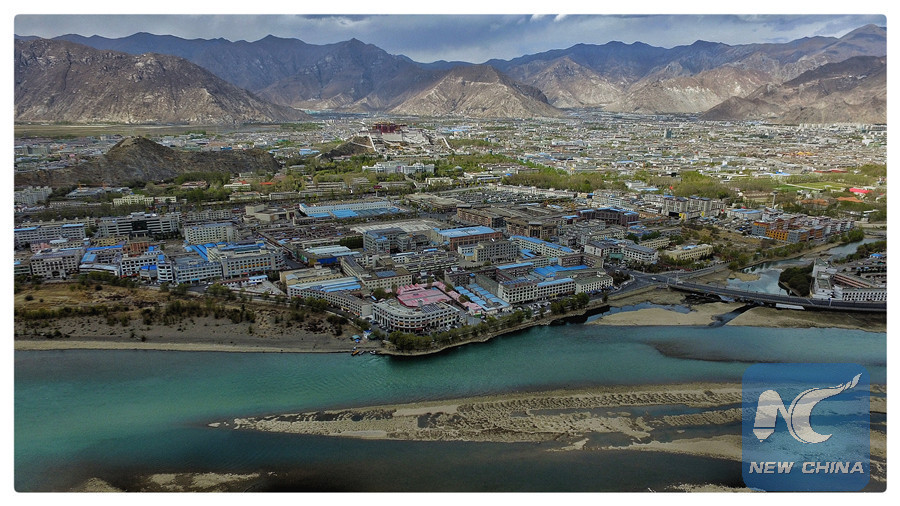
Photo taken on May 23, 2016 shows a bird view of Lhasa. (Xinhua/Purbu Tashi)

Photo taken on May 23, 2016 shows a street of Lhasa at night. (Xinhua/Purbu Tashi)
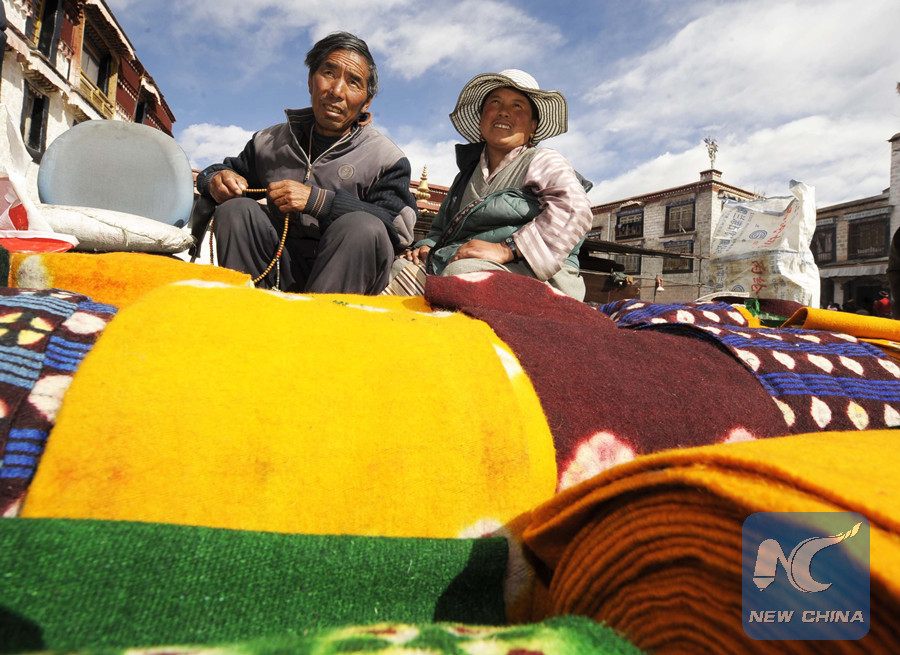
Villagers sell home-made blanket in Lhasa on Jan. 26 2009. (Xinhua/Purbu Tashi)
The autonomous region has also invested heavily in tourism, bottled water industry and food manufacturing in hopes of making them into pillar industries to drive sustainable growth in the long term.

Tourists take photos in front of the Potala Palace on May 24, 2016. (Xinhua/Purbu Tashi)
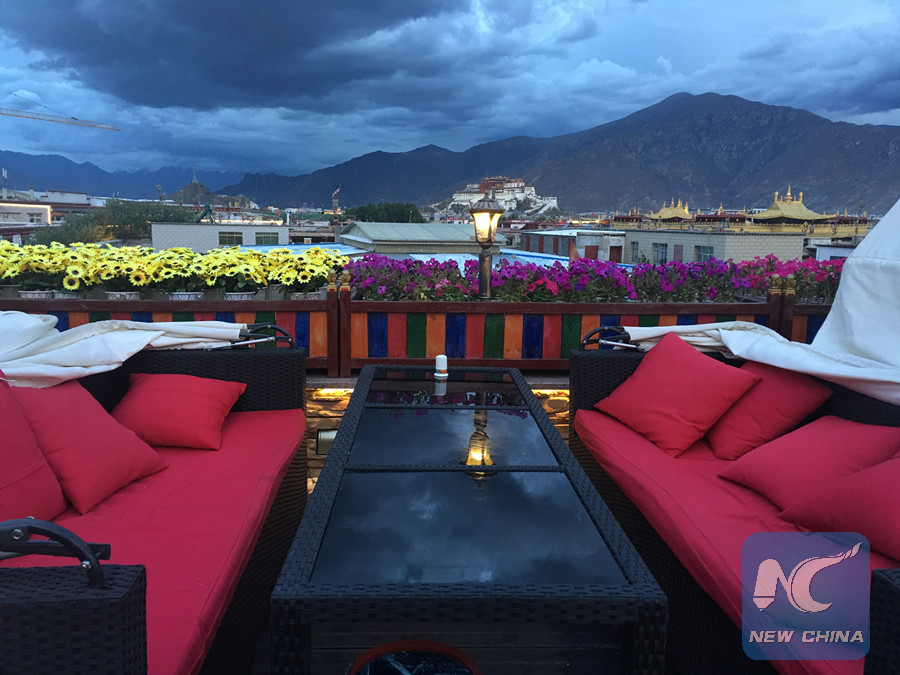
Photo taken on May 23, 2016 shows a cafe where the Potala Palace can be seen in the distance. (Xinhua/Purbu Tashi)
Last year, 20.2 million tourists visited Tibet, 11 times more than before the Qinghai-Tibet Railroad was put into use, while tourism revenue exceeded 28 billion yuan, 15 times more than a decade ago.

An entrepreneur introduces his product to a visitor in Lhasa's makerspace for start-ups on July 26, 2016. (Xinhua/Purbu Tashi)
In July, Tibet's first makerspace for start-ups went operational in Lhasa. Ten businesses and six teams have settled in so far.
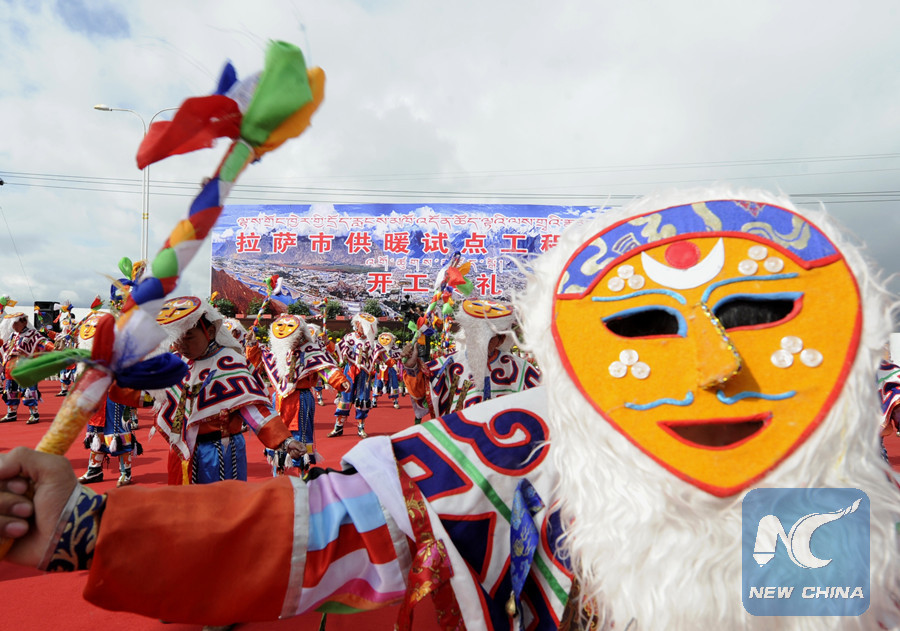
Tibetan opera actors perform at an opening ceremony celebrating the construction of Lhasa's heating system on April 28, 2012. (Xinhua/Purbu Tashi)
The makerspace covers an area of 1,050 square meters with more than 100 working seats. Besides basic working space and start-up training, it provides services such as business registration, intellectual property rights consulting service and legal service.

